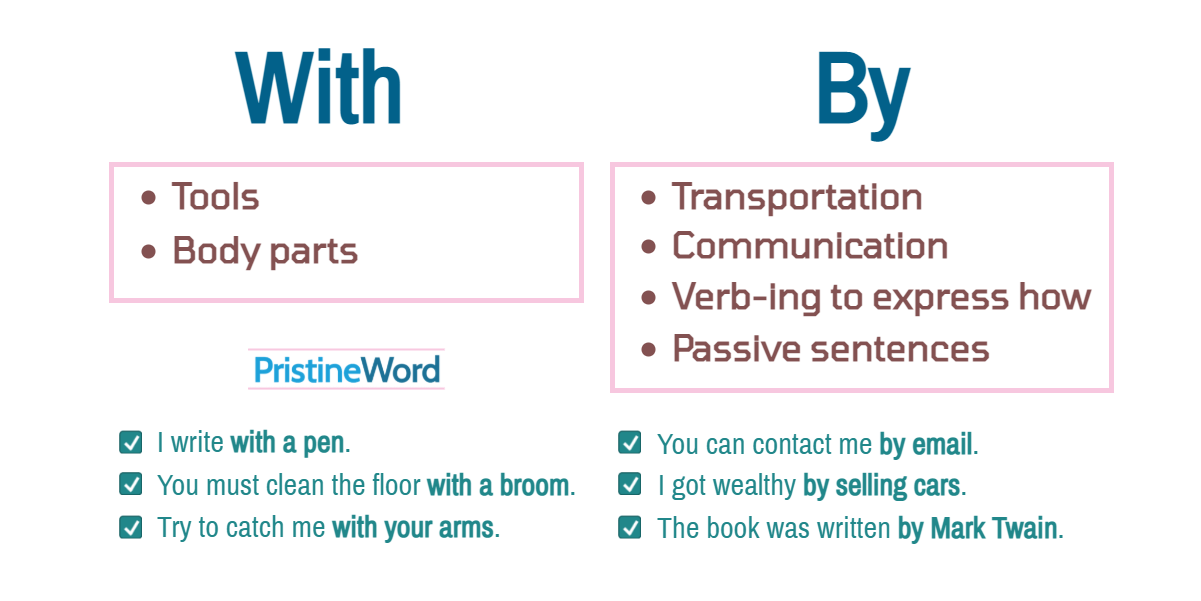By and with are used to express how you do things, but they are not interchangeable. These four basic rules will help you decide which one to choose.
By and with are used to express how you do things, but they are not interchangeable. These four basic rules will help you decide which one to choose.
1.) Tools or Body Parts? Use 'WITH'
We are talking about objects (or body parts) that help us do things.
- I write with a pen.
- I don't think you can break a diamond with a hammer.
- You must clean the floor with a broom.
- Try to catch me with your arms.
- I point with my fingers.
2.) Transportation or Communication? Use 'BY'
- You should go by train.
- I went by car.
- You can contact me by email.
- If you want to talk by phone, call tomorrow morning.
Notice that when using "by + noun", we don't put an article before the noun.
I go by a bus.
I go by bus.
3.) 'Verb+ing' to express how? Use Always 'BY'
We are talking here about how you do or achieve something.
- I got wealthy by selling cars.
- I learned physics by going to the university.
If you are using "verb+ing" to say how you do something, you must use by. If you are using a noun (tool or body part), you must use with.
- They did it by using a hammer.
- They did it with a hammer.
Another example:
- I smile by moving my lips.
- I smile with my lips.
4.) Passive Sentences? Use Always 'BY'
- The book was written by Mark Twain.
- The cat was chased by the dog.

